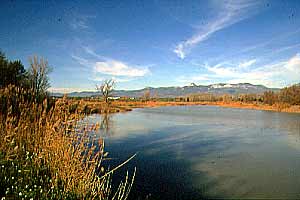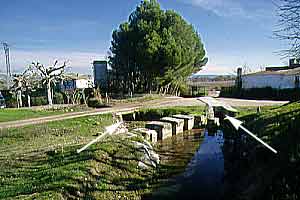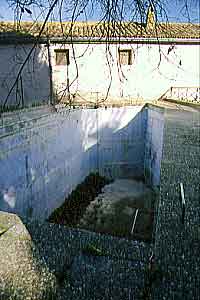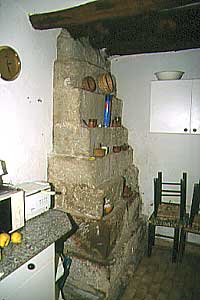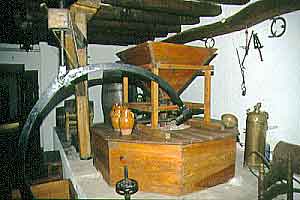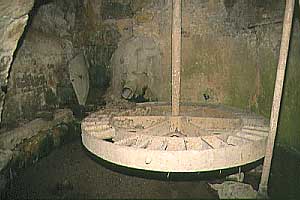Path: Introduction -
Visit the mills; catalogue - Chimillas

Mills in Alto Aragón — molino harinero
Chimillas

Chimillas lies a bit north of
the city of Huesca. From Huesca take the road to Pamplona via Puenta la Reina
de Jaca. Chimillas is sign-posted. As we were kindly brought to the mill by the
owners of the Molino de Morana I can't give very precise directions.
Try to find the Alberca de Cortés situated south of the village. The mill, also known as
the Molino de Cortés, is nearby. The construction
is now a second residence for people from Huesca.
We were shown around by the owners, proud with reason because the mill is marvellously
restorated.
Pictures: 29.xii.2002
